The flag of Namibia, with its distinctive design and symbolism, stands out in the global array of national flags, mirroring the nation’s varied heritage and the beauty of its environment. It holds a special place for Namibians, symbolizing their collective strength, unity, and shared dreams for a brighter, unified future.
Flag of Namibia
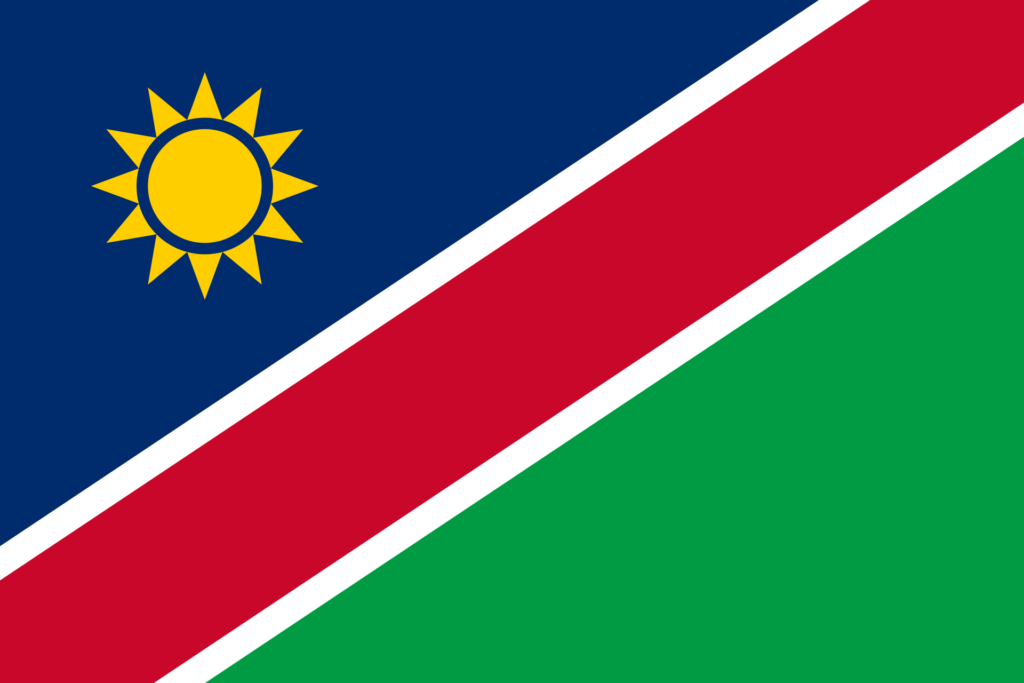
The flag of Namibia presents a striking diagonal tricolor, divided into blue, white, and green sections, topped with a radiant red sunburst. This design is distinctive for its diagonal layout, a departure from the more common horizontal or vertical stripes found in many national flags.
The prominent sunburst adds a dynamic element, symbolizing vitality and forward momentum. The flag’s overall design blends simplicity and symbolism, effectively capturing the essence of Namibia’s character and forward-looking ethos.
Flag of Namibia: Color Palette
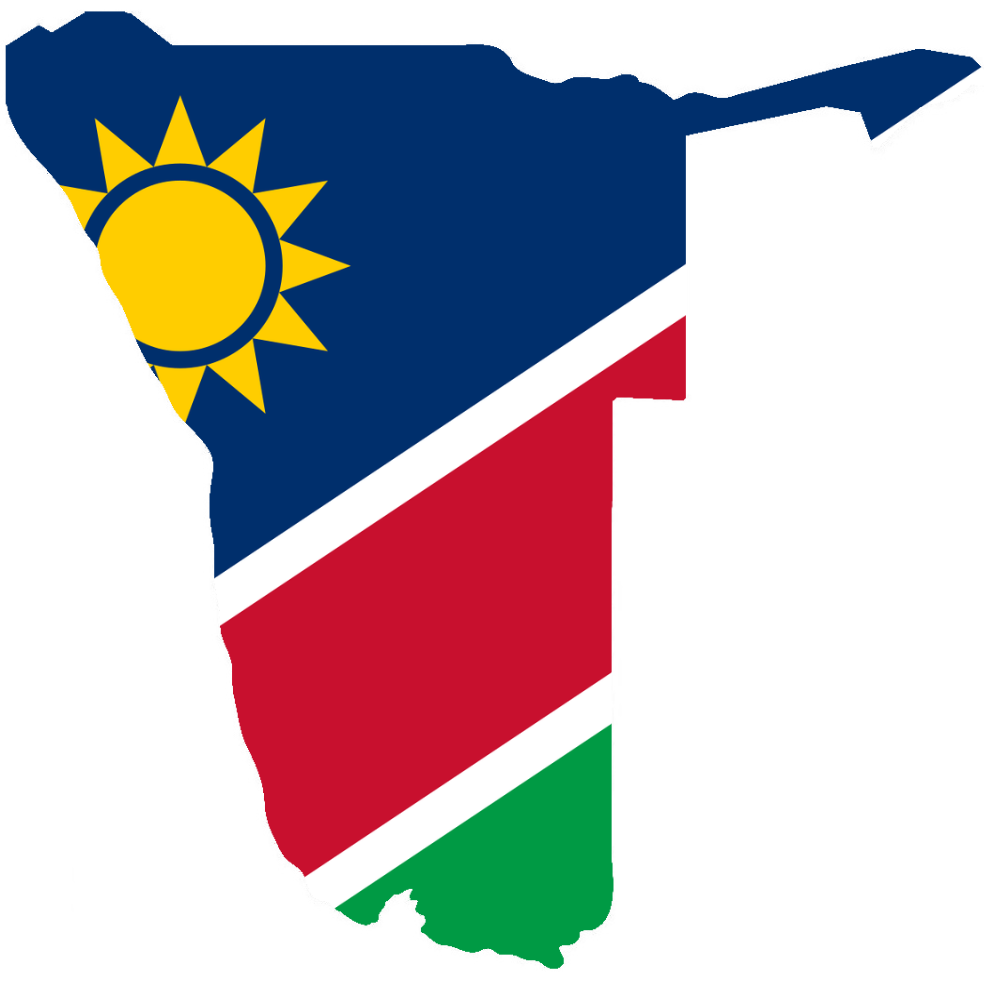
Namibia Flag Emoji: 🇳🇦
The color palette of Namibia’s flag is a thoughtfully selected combination that conveys deep meaning and reflects key aspects of the nation’s character. Each hue in this palette plays a significant role in encapsulating the country’s values, natural beauty, and historical journey.
The upcoming segment will delve into the specific symbolism of each color, revealing how they collectively paint a picture of Namibia’s identity and heritage.
Meaning of Each Color
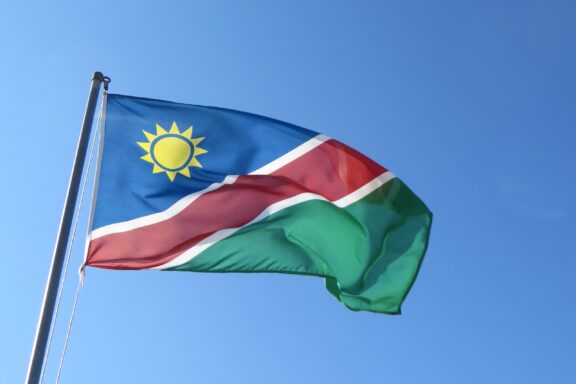
Red
Red in the Namibian flag symbolizes the people of Namibia, reflecting their heroism and the collective determination to build a future of equal opportunity for all.
The red color on the flag is a tribute to the spirit and fortitude of the Namibian people, embodying their commitment to forging a nation marked by equal opportunities for everyone.
White
Universally, white is associated with peace and harmony. In the context of Namibia, it signifies the nation’s aspiration for these ideals post-independence.
Including white in the flag underscores Namibia’s dedication to maintaining agreement among its diverse population, fostering a society where tranquility and togetherness prevail.
Green
Green is often linked to the earth, growth, and fertility. In Namibia, it represents the country’s vegetation and agricultural resources.
By featuring green, the flag highlights the importance of agriculture and the natural environment in Namibia, acknowledging these as vital components of the nation’s identity and economy.
Blue
Blue is commonly associated with the sky and water, essential for life. In Namibia’s flag, blue symbolizes the sky, the Atlantic Ocean, the country’s marine resources, and the importance of rain and water in this predominantly arid country.
The blue segment of the flag emphasizes the significance of natural resources, particularly water, in sustaining life and contributing to the nation’s livelihood.
Golden-Yellow Sun
The sun, particularly in its golden-yellow color, is a universal symbol of life, energy, and renewal. In Namibian culture, it represents the warmth and color of the Namib Desert, a significant natural feature of the country.
With its twelve rays, the sun on the flag signifies life and energy and represents the country’s wealth. The twelve rays symbolize the diversity of Namibia, representing the twelve main ethnic groups that make up its population.
Coat of Arms of Namibia
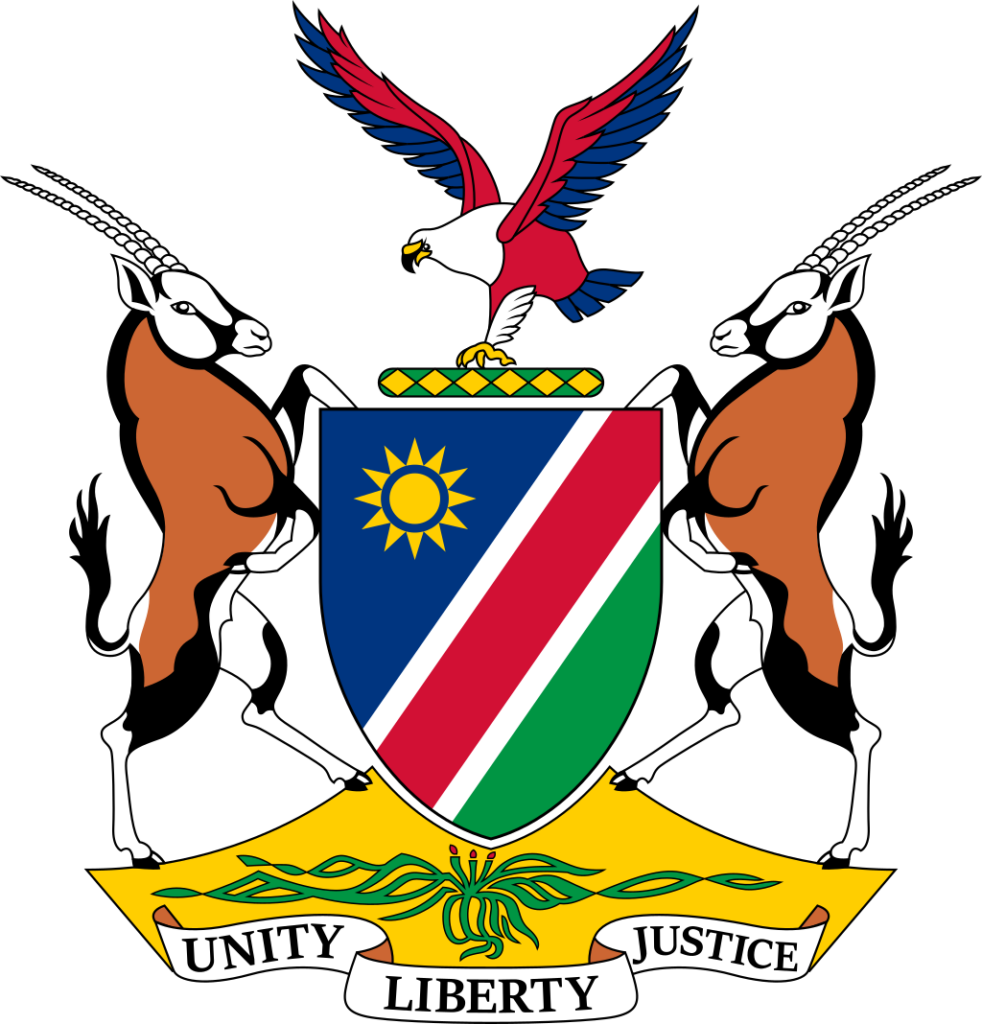
The Coat of Arms of Namibia is a vibrant emblem of the nation’s diverse legacy and natural and cultural riches. It is a symbol that captures the essence of the Namibian landscape and the spirit of its people.
- Shield and National Flag: Central to the Coat of Arms is a shield that features the Namibian flag. This integration symbolizes the importance of the nation and the principles the flag represents.
- Fish Eagle: Above the shield is the fish eagle, representing the north of Namibia and the significance of the nation’s water resources. This majestic bird is also a symbol of the vision and insight of Namibia’s leaders.
- Oryx Antelope: Flanking the shield on either side are two Oryx antelope. Native to Namibia’s semi-arid regions, they embody courage, elegance, and pride, reflecting attributes admired by the Namibian populace.
- Welwitschia Mirabilis: The unique Welwitschia plant is at the base of the Coat of Arms, rooted in the desert sand. A symbol of survival in harsh conditions, it epitomizes the resilience and endurance of the Namibian spirit.
- Headband with Diamond Shapes: The headband above the shield is adorned with diamond shapes, representing the significant role of diamonds in the country’s economy and alluding to the wealth of natural resources.
- Motto: The motto of the Coat of Arms is “Unity, Liberty, Justice,” encapsulating the fundamental values enshrined in Namibia’s Constitution and the aspirations of its people.
This emblematic Coat of Arms of Namibia is not just a governmental symbol; it narrates the story of a nation deeply connected to its environment, proud of its cultural diversity, and guided by visionary leadership.
Historical Evolution and the Meaning Behind Changes
The evolution of Namibia’s flag reflects its historical shifts and Namibia’s path toward sovereignty and independence. Initially, during the German colonial era, the territory now known as Namibia flew the German Empire’s flag, indicating its colonial status.
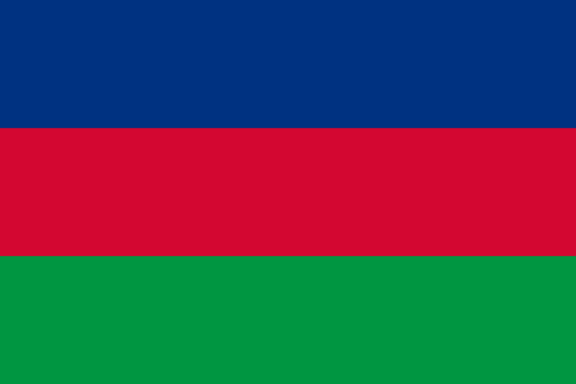
As the independence movement, led by the South West Africa People’s Organization (SWAPO), gathered strength, a distinct flag symbolizing Namibia’s desires for autonomy and self-governance came to the forefront. This flag featured a horizontal tricolor, which influenced the color scheme of the future national flag.
The current Namibian flag, adopted at the moment of independence on March 21, 1990, marked a significant departure from its colonial past. The design, resulting from a national competition with over 800 entries, incorporated a unique diagonal layout.
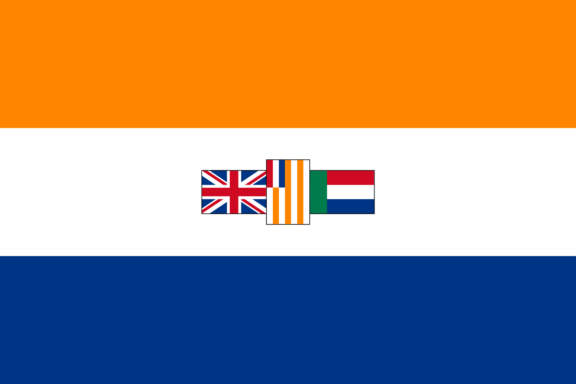
This new arrangement signified the nation’s progress and break from its history of foreign rule. The sun symbol in the design represents life and energy, aligning with the country’s aspirations for a bright and self-determined future.
The transition in flag designs from colonial emblems to a symbol of independence mirrors Namibia’s transformation from a colonized territory to an independent nation, seeking to carve out its unique identity and path on the world stage.
Overall Symbolic Meaning of the Flag
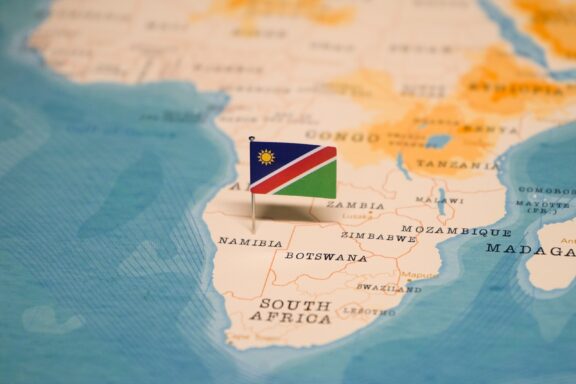
The flag of Namibia is a powerful symbol of the nation’s unity, resilience, and aspirations. Its unique design, characterized by a diagonal division and a central sun motif, breaks away from traditional flag layouts, reflecting the country’s dynamic and forward-moving spirit and encapsulates Namibia’s journey from its historical struggles to its current status as a sovereign nation.
Similar Flags to the Flag of Namibia
Let’s explore the flags of other countries that share striking similarities with Namibia’s flag, unveiling the connections and shared themes in their designs.
Tanzania
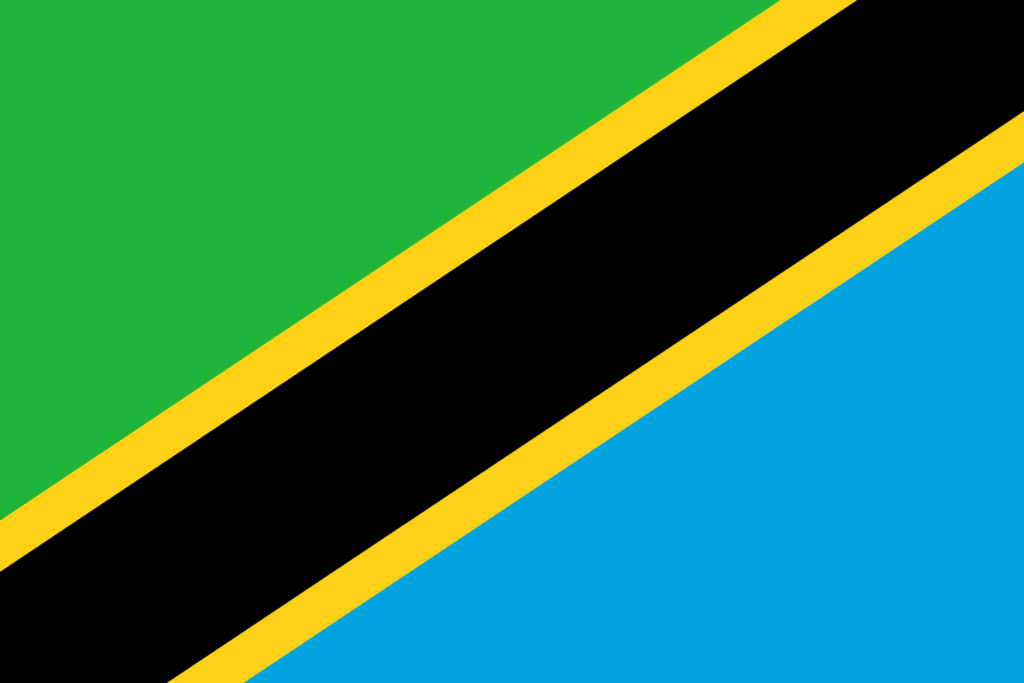
Like Namibia’s, Tanzania’s flag employs a diagonal division, uncommon in national flags. This shared design element suggests a sense of movement and progress. The diagonal layout in both flags can be seen as a symbol of rising above past challenges and moving towards a hopeful future.
Gambia
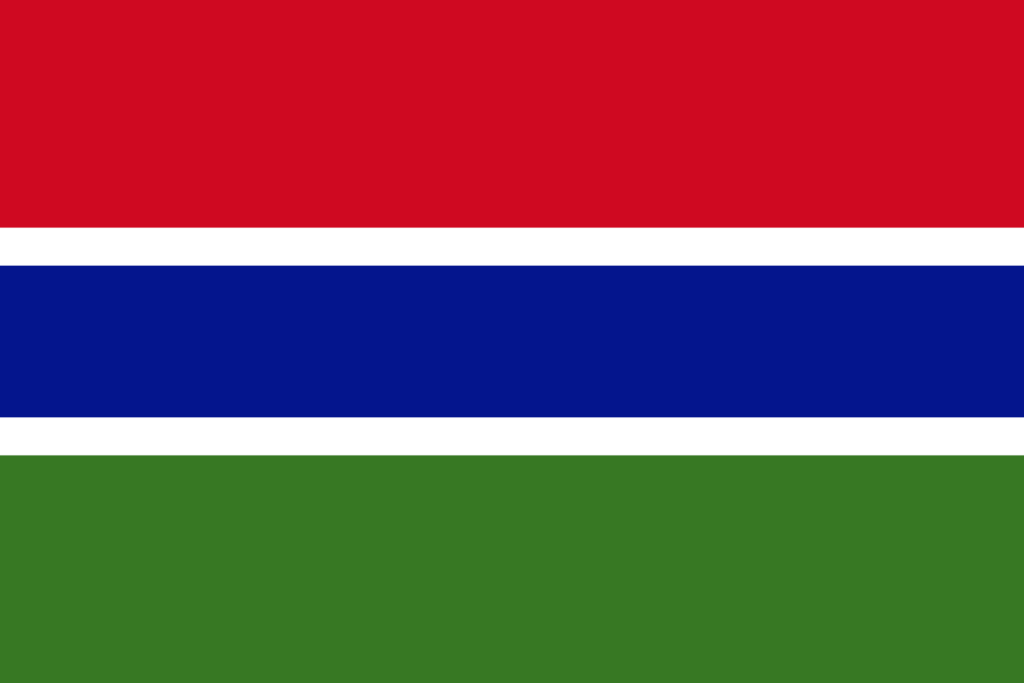
While not featuring a diagonal division or a sun motif like Namibia’s, the Gambia’s flag does share a bold and vibrant color scheme. The use of striking colors in The Gambia’s flag, divided into horizontal stripes, presents a visual appeal similar to Namibia’s.
Both flags utilize colors to convey strong messages about their nation’s identity and values, though the specific meanings of the colors differ in each context.
South Africa
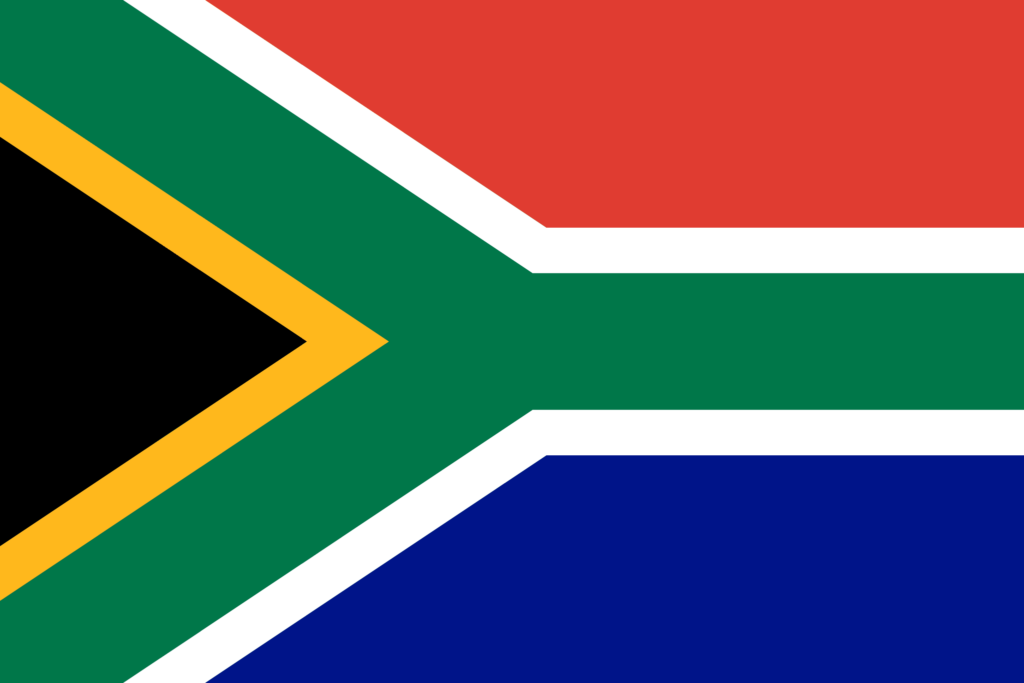
South Africa’s flag, known for its unique Y-shaped design, shares the theme of unity and diversity with Namibia’s flag.
The convergence of multiple colors in South Africa’s flag symbolizes the coming together of different elements of society, a theme also present in Namibia’s flag, where diverse colors and symbols unite to represent its country.
Final Thoughts
Namibia’s flag, rich in symbolism and unique in design, holds a distinctive place among the world’s national flags, embodying the essence and aspirations of the nation. For its citizens, the flag is a source of pride and unity, symbolizing their collective journey and the enduring spirit of Namibia.
Image Sources and Copyright Information
- Namibian Flag Against Blue Sky: © Dickelbers/Wikimedia | CC BY-SA 4.0 International